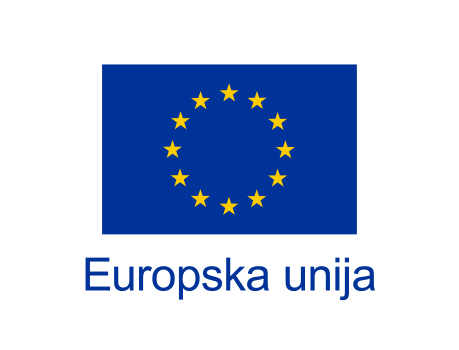
 European Union. Together to EU funds
European Union. Together to EU funds
21st Century Paradox At the same time, tons of food are in the trash, millions are starving, and 39% of the population is overweight

21st Century Paradox At the same time, tons of food are in the trash, millions are starving, and 39% of the population is overweight
It is rare today to hear someone enjoy a “comfortable and easy” life, without pressure, stress, nervousness. A hectic lifestyle is taken for granted today. Everyone is in a hurry somewhere, obligations are waiting, we don’t have time for quality meals, we throw away food because we “didn’t have time” to prepare it. Such a lifestyle leads to excessive food waste, but also to obesity. And while “somewhere”, in distant Africa, some would give everything for what we must have once thrown away because of its “ expiration date”, 39% of the population today suffers from obesity.
Food is necessary for life, but if we do not eat well and take in too many unnecessary calories, seduced by tempting tastes, we will endanger not only our physical appearance but also our health. Believe it or not, obesity is one of the burning issues of today, and how great it is is shown by the fact that it has become more common worldwide than malnutrition and hunger.
The UN Food and Agriculture Organization (FAO) is sending an alarming warning – the last few decades of accelerated lifestyle, globalization, rising living standards have led to radical changes in the way food is prepared and consumed. We have replaced the seasonal diet, mostly based on plant origin, with refined, processed foods that contain a large proportion of fat, sugar, salt and starch, which the “heroes” of today deliver to us right on the bike with big baskets and yellow or blue coats. Do you know who we are talking about? You surely do! They must have rung your doorbell once or twice.

The World Health Organization says two billion adults are considered overweight, out of which 650 million are obese. This means that 39% of the world’s population over the age of 18 is overweight, and as many as 13% are obese. An unhealthy diet is associated with a higher risk of developing cardiovascular disease, diabetes and certain types of cancer. See? There is a common reason why we are warning and asking “do you know what you’re eating”?
Fruits, vegetables, legumes, cereals, nuts, a variety of foods low in fat, sugar and salt are what the World Health Organization recommends, however, can everyone afford such a diet? I can not.
The standard of living in Croatia often does not allow the average Croat to afford half a kilogram of almonds, walnuts or hazelnuts.
In case we can afford them, the question still arises, do we know where they came from? Are they imported or domestic? This is a question to which we did not get an answer in the previous agricultural strategy (And VeeMee has it – just put the camera on the QR code of the products in our database and the answer is already waiting for you ☺ ). We have been waiting for a new strategy since 2002. It was presented on June 16 this year, and the main goals that the Ministry emphasizes and which should be achieved by 2030 are:
- to produce more nutritious and high-quality food at competitive prices,
- sustainably manage natural resources in changing climatic conditions and
- contribute to quality improvement living and increasing employment in rural areas.
The realization of the defined vision of development will be achieved by accomplishing four-set strategic goals:
- Increasing the productivity and resilience of agricultural production to climate change,
- Strengthening the competitiveness of the agri-food sector,
- Rebuilding the rural economy and improving living conditions in rural areas and
- Encouraging innovation in the agri-food sector.
“Considering the natural benefits of Croatia, water quality and comparative advantages due to geographical location and proximity to large and diverse EU markets, through the transformation of production processes and product improvement the goal is to achieve greater value chain and competitiveness of Croatian aquaculture products abroad and at the home market, “said the Ministry.
And really, it’s time for a change to happen! From the perspective of agriculture and the food system, obesity prevention is best achieved by ensuring access to a high-quality varied diet. Furthermore, we live in a country that can produce enough food and that can feed more people than there are in Croatia. However, here we come to an important implication: a strategy in which policy directly intervenes in agricultural production to promote a healthy diet will certainly not be effective if the way the food is processed, distributed and ultimately sold through the supply chain is not taken into account. And that’s where we jump in – your VeeMee!
See you soon!






 FACEBOOK
FACEBOOK
 TWITTER
TWITTER


